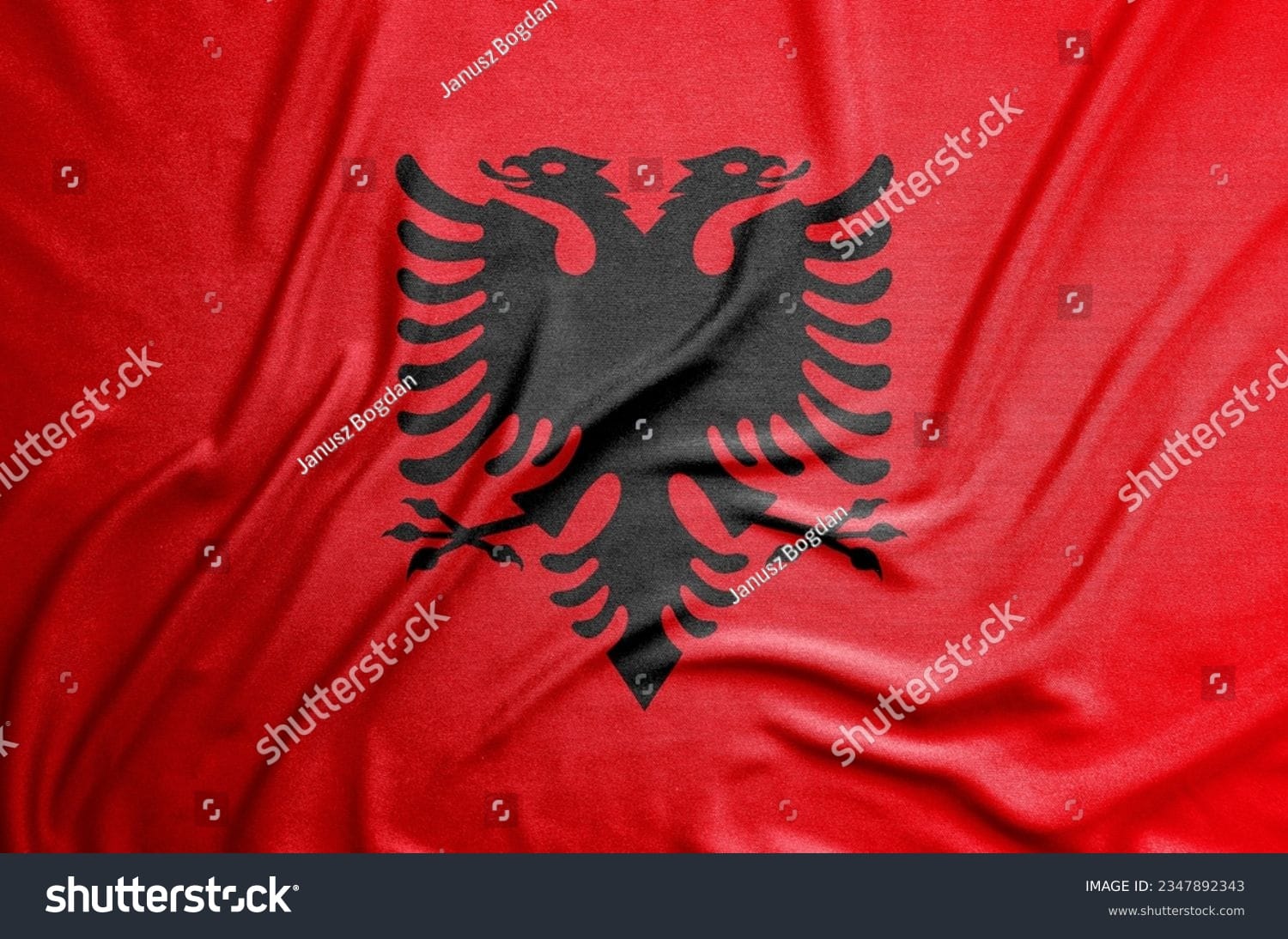The Albanian Flag: A Symbol of Resilience
The Albanian flag, a striking crimson banner emblazoned with a black double-headed eagle, is far more than just a national emblem. It’s a powerful symbol of resilience, rebellion, and the enduring spirit of the Albanian people, deeply interwoven with their history and identity. This article explores the flag’s rich symbolism, its evolution through time, and its significance for Albanians both within the country and across the global diaspora. [https://www.lolaapp.com/sultanate-just-north-of-the-equator]
The Eagle’s Legacy: From Skanderbeg to Sovereignty
The double-headed eagle isn’t unique to Albania. Its use dates back centuries, notably appearing in the Byzantine Empire and among various other groups. However, for Albanians, its significance is inextricably linked to the 15th-century national hero, Gjergj Kastrioti Skanderbeg. Facing Ottoman occupation, Skanderbeg rallied Albanian clans under the banner of the double-headed eagle, igniting a fierce resistance movement. This act transformed the eagle into a powerful symbol of defiance, forever associating it with the Albanian struggle for freedom. The League of Lezhë, the first unified Albanian entity, further solidified the eagle’s connection to Albanian identity.
Deciphering the Double-Headed Eagle: Strength, Vigilance, and Unity
The double-headed eagle’s symbolism is multifaceted. It represents strength, vigilance, and the nation’s hard-won sovereignty. Some scholars suggest the two heads also symbolize the unification of northern and southern Albania, a visual representation of national unity. The eagle’s watchful gaze, directed both east and west, embodies the nation’s commitment to protecting its independence and borders. It serves as a constant reminder of Albania’s resilience and determination to safeguard its sovereignty.
The Crimson Field: A Testament to Sacrifice
The vibrant red backdrop against which the eagle soars is equally symbolic. It represents bravery, sacrifice, and the bloodshed endured in the pursuit of freedom. This crimson field serves as a poignant reminder of the price of liberty, amplifying the eagle’s powerful message of resistance and resilience.
From Suppression to Rebirth: The Flag’s Enduring Journey
During Ottoman rule, the Shqiperia flag faced periods of suppression, yet its symbolic power persisted. Like a flickering ember, it remained a beacon of hope for Albanian nationalists. With the rise of independence movements in the late 19th and early 20th centuries, the flag was revived, transforming from a symbol of resistance to one of national rebirth. Its official standardization in 2002 (Law Nr.8926) formally recognized its crucial role in unifying the nation, ensuring its continued presence in Albanian life. This formalization likely strengthened the flag’s position as a powerful national symbol.
The Presidential Flag: A Variation on the Theme
While the standard Shqiperia flag is universally recognized, a presidential variant exists, approved in 2014 by President Bujar Nishani. Further research into this presidential flag can reveal subtle design differences and offer deeper insights into the nuances of Albanian symbolism. This variation highlights the dynamic nature of national symbols and their capacity to evolve and adapt.
The Living Symbol: A Unifying Force in the Modern World
The Shqiperia flag is not merely a relic of the past; it’s a living, breathing symbol of Albanian identity in the 21st century. From national holidays to everyday life, it unites Albanians within the country and those dispersed across the globe. Its presence in art, literature, and the digital world underscores its ongoing relevance in the modern age. How its representation will evolve in the future remains an open question, inviting further exploration.
Unresolved Questions and Future Research
While much is known about the Albanian flag, areas of ongoing research and debate continue to enrich our understanding. Historians are still exploring the nuances of its evolution and design. Further investigation into individual interpretations of the flag’s symbolism and comparisons with other Balkan flags can offer valuable insights. These ongoing inquiries highlight the dynamic and evolving nature of historical understanding and national symbolism.
Why is Albania called Albania and not Shqipëria?
Albania, officially known as the Republic of Albania, presents a fascinating case of dual identity, with two distinct names reflecting both internal cultural perception and external historical influences. While the world recognizes the country as Albania, Albanians themselves proudly use the name Shqipëria, a term deeply intertwined with their national identity and the majestic symbolism of the eagle.
Shqipëria: The Land of the Eagles
Shqipëria, translating to “Land of the Eagles,” resonates deeply within the Albanian heart. The eagle (shqiponja) is not merely a national symbol; it’s woven into the very fabric of their being, influencing the name of their language (Shqip) and the term for the Albanian people (Shqiptar). This close association with the eagle likely developed over centuries, possibly reflecting a sense of freedom, strength, and an intimate connection to the land. “However, we, do not call our country Albania. Instead, we say Shqiperi for our country, Shqip for the language, and Shqiptar for the people. These names are believed to have derived from the word “shqiponje”, which means eagle in Albanian.” This quote emphasizes the personal significance of Shqipëria for Albanians.
Albania: An Echo of Antiquity
The internationally recognized name, Albania, carries echoes of antiquity. Historians suggest it might originate from the Albanoi, an Illyrian tribe mentioned by the ancient geographer Ptolemy. Another theory links the name to the city of Albanopolis, although the exact connection remains somewhat unclear. It’s possible both theories hold some truth, or perhaps a completely different narrative awaits discovery. Regardless of its precise origin, Albania is the name that took root in historical records, shaping global perceptions of the nation.
Two Sides of the Same Coin: Internal Identity vs. External Perception
The coexistence of Shqipëria and Albania reflects the intricate relationship between a nation’s self-perception and its external image. Similar dualities exist for other countries, such as Germany (Deutschland) and Japan (Nippon), each carrying unique historical and cultural contexts. For Albanians, Shqipëria evokes a sense of belonging and cultural pride, while Albania connects them to the wider global community. This linguistic duality raises intriguing questions. Does it create any tension between internal and external perceptions of Albanian identity? What role did historical events and international relations play in solidifying Albania as the globally recognized name? Ongoing research into these questions may offer further insights into this fascinating cultural and linguistic puzzle.
Which country is Shqipëria?
Shqipëria, meaning “Land of the Eagles,” is simply the Albanian name for Albania, a country located in Southeastern Europe, nestled in the Balkan Peninsula. It’s a region steeped in history, bordered by the Adriatic and Ionian Seas, and sharing land borders with Montenegro, Kosovo, North Macedonia, and Greece. This strategic location has shaped Albania’s history, influencing its interactions with various empires and cultures over centuries.
From Ancient Illyrians to Modern Republic
The land that is now Albania has a long and complex history, dating back to the Mesolithic period. The Illyrian tribes, considered ancestors of modern Albanians, once inhabited this region. From the Byzantines to the Ottomans, various empires have left their mark on Albania’s cultural tapestry. Its declaration of independence in 1912 marked a pivotal moment in its modern history.
The Double-Headed Eagle: A Legacy of Resistance
The iconic double-headed eagle, prominently displayed on the Albanian flag, is a powerful symbol linked to Gjergj Kastrioti Skanderbeg, the 15th-century hero who fiercely resisted Ottoman rule. The eagle represents Skanderbeg’s enduring legacy, symbolizing sovereignty, vigilance, and the ongoing struggle for freedom.
A Nation of Rich Traditions
Albania offers a captivating blend of ancient roots and modern aspirations. Its unique language, distinct cultural traditions, and vibrant customs invite exploration. From its historical landmarks to its natural beauty, Albania has a story waiting to be discovered.
The Etymological Debate
While the connection to the Albanoi tribe remains the most widely accepted theory for the origin of the name “Albania,” some historians suggest a possible link to the Latin word “albus,” meaning “white,” perhaps referencing the snowy mountains that characterize the Albanian landscape. Ongoing research continues to shed light on the intricacies of ancient Illyrian connections and the diverse interpretations of historical place names. It’s important to recognize that historical narratives can be viewed through different lenses, particularly in a region as complex as the Balkans.
Why does the Albanian flag have a two-headed eagle?
The two-headed eagle on the Albanian flag is a powerful symbol with a complex history, representing sovereignty, strength, and resilience. While not unique to Albania, its presence on the flag is deeply intertwined with the nation’s history, particularly the legacy of Gjergj Kastrioti Skanderbeg, the 15th-century hero who resisted Ottoman rule.
From Byzantine Emblem to Albanian Symbol
The double-headed eagle’s origins can be traced back to the Byzantine Empire, where it served as a symbol of the Paleologian dynasty. It also appeared in other Balkan entities. However, it was Skanderbeg’s adoption of the symbol during his rebellion against the Ottomans that firmly cemented its place in Albanian national consciousness. This act transformed the eagle into a rallying cry for independence, forever linking it to the Albanian struggle for freedom.
Interpreting the Two Heads
The meaning of the two heads remains a subject of discussion. Some theories suggest they symbolize the unification of northern and southern Albania, while others propose they represent vigilance, looking both east and west to protect the nation’s hard-won independence.
The Crimson Background: A Symbol of Sacrifice
The vibrant red background of the flag is equally symbolic, representing bravery, sacrifice, and the bloodshed endured during the fight for independence. It adds another layer of meaning to the flag, serving as a constant reminder of the price of freedom.
The Flag’s Evolution
The Albanian flag, as we know it today, with its specific dimensions and proportions (1:1.4), evolved over time. While variations existed throughout Albanian history, its formal adoption occurred in 1912 with the declaration of independence. The design was further standardized in 2002, solidifying its status as a cherished national symbol.
A Symbol of Unity and Pride
The Albanian flag’s significance extends beyond national borders, serving as a powerful unifying symbol for the Albanian diaspora worldwide. Whether displayed during national celebrations or sporting events, the two-headed eagle continues to soar as a symbol of national pride and resilience.
- Crypto Quotes’ Red Flags: Avoid Costly Mistakes - June 30, 2025
- Unlock Inspirational Crypto Quotes: Future Predictions - June 30, 2025
- Famous Bitcoin Quotes: A Deep Dive into Crypto’s History - June 30, 2025

















1 thought on “The Shqiperia Flag: Unfurling the History and Symbolism of Albania”
Comments are closed.